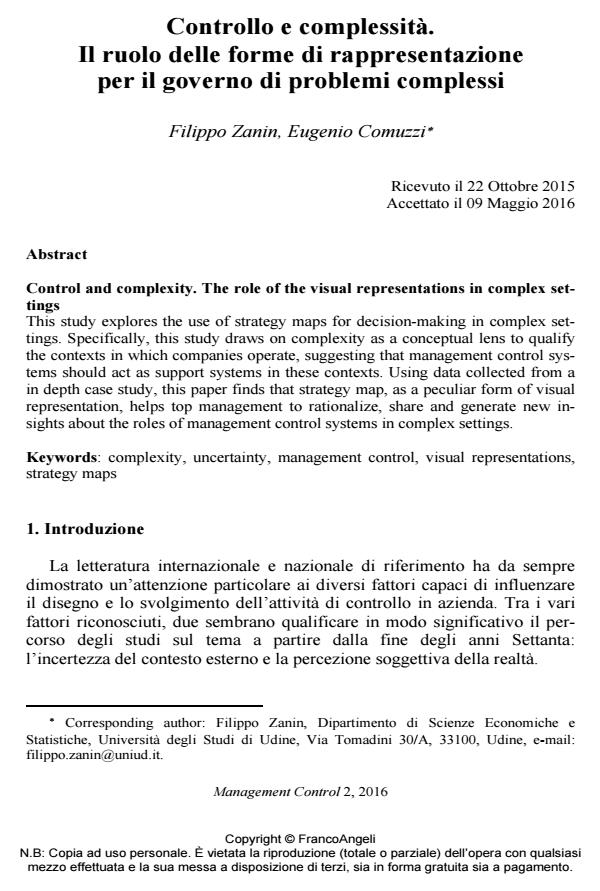Control and complexity. The role of the visual representations in complex settings
Journal title MANAGEMENT CONTROL
Author/s Filippo Zanin, Eugenio Comuzzi
Publishing Year 2016 Issue 2016/2
Language Italian Pages 26 P. 89-114 File size 303 KB
DOI 10.3280/MACO2016-002005
DOI is like a bar code for intellectual property: to have more infomation
click here
Below, you can see the article first page
If you want to buy this article in PDF format, you can do it, following the instructions to buy download credits

FrancoAngeli is member of Publishers International Linking Association, Inc (PILA), a not-for-profit association which run the CrossRef service enabling links to and from online scholarly content.
This study explores the use of strategy maps for decision-making in complex settings. Specifically, this study draws on complexity as a conceptual lens to qualify the contexts in which companies operate, suggesting that management control systems should act as support systems in these contexts. Using data collected from a in depth case study, this paper finds that strategy map, as a peculiar form of visual representation, helps top management to rationalize, share and generate new insights about the roles of management control systems in complex settings.
Keywords: Complexity, uncertainty, management control, visual representations, strategy maps
- Management Control Systems in Complex Settings pp.79 (ISBN:9781522539872)
- Management Control Systems in Complex Settings pp.1 (ISBN:9781522539872)
- L'approccio integrato al controllo aziendale in un periodo di crisi "eccezionale". Il caso del Gruppo Farnese Barbara Iannone, Carlo Piretti, in MANAGEMENT CONTROL 1/2021 pp.81
DOI: 10.3280/MACO2021-001005 - La crisi COVID-19 come "crash-test" per i sistemi di controllo aziendali: il caso di un'azienda di trasporto pubblico locale Francesco Badia, Graziana Galeone, Simona Ranaldo, in MANAGEMENT CONTROL 1/2021 pp.57
DOI: 10.3280/MACO2021-001004
Filippo Zanin, Eugenio Comuzzi, Controllo e complessità. Il ruolo delle forme di rappresentazione per il governo di problemi complessi in "MANAGEMENT CONTROL" 2/2016, pp 89-114, DOI: 10.3280/MACO2016-002005